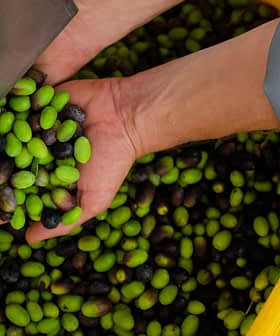
The drastic drop in Spain’s olive oil production this season appears to have been a boon for Italy and Tunisia, which have both dramatically increased sales to their Mediterranean neighbor, according to data from Agri-food Cooperatives Spain.
Italy, meanwhile, remains the main foreign buyer of Spanish olive oil, though the volume has shrunk, and Spain has lost ground in the crucial United States market.
Imports into Spain
Imports from Italy to Spain reached 5,065 tons in the first three months of the season (October to December ), nearly quadruple that for the same quarter in 2011. Those from Tunisia are up 256 percent, to 2624 tons.
Portugal, however, remains the main foreign supplier for Spain, delivering nearly 7,000 tons for the quarter, down just 2 percent on the same period in 2011. The Sovena group, which has plantations in Portugal and supplies olive oil for Mercadona supermarkets in Spain, accounts for much of this volume.
Italy was next, followed by Morocco (4,194 tons), and France (up by half to 2,044 tons) then by Greece (713 tons) and Argentina (down a quarter to 580 tons).
Overall, olive oil imports into Spain were up 85 percent in volume, reaching nearly 23,000 tons, and 113 percent in value. Of these, 11,750 were lampante grade and nearly 8,700 virgin or virgin extra and the rest covered other categories and fractions of olive oil.
Exports down a fifth
Meanwhile, the country, still in financial crisis, has suffered a decline in exports to the tune of nearly a fifth in terms of volume, down to 178,361 tons for the quarter, though in euro value the drop was just 2.3 percent.
Of these exports, 131,911 tons were virgin or virgin extra, 42,000 were other grades or fractions of olive oil, and 4400 were lampante.
The Agri-food Cooperatives report shows that Italy remains the main foreign destination for Spanish olive oil — taking a third of the total — but the volume has dived about 40 percent, to nearly 61,000 tons for the quarter.
Portugal, Spain’s main source of imports, is also its second biggest market for exports, taking about 22,300 tons. France follows with 16,000 tons, almost unchanged, but trade into the U.S. market has declined nearly a third to just over 14,000 tons.
On the positive side for Spain, it sold 9,600 tons to the United Kingdom, up 16 percent, and nearly 9,200 tons to China, up a massive 63 percent. Exports to Brazil, Japan and India were up more than 40 percent but those to Australia fell about 39 percent.
According to Spain’s Olive Oil Agency (AA), the country’s production in the first quarter was 383,000 tons, less than half of that for the first quarter of 2011/12, which set a record for production.
Agri-food Cooperatives Spain predicts a total yield of just 605,000 tons this season. The consequence of adverse weather last year, particularly drought, it amounts to less than half of Spain’s average for the last four seasons and is down nearly 63 percent on last season’s 1.6 million tons.








